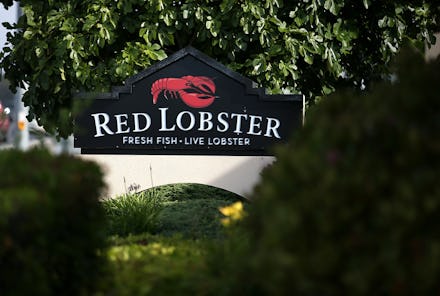Where does Red Lobster's lobster actually come from?

No chain restaurant is better known for serving crustaceans than Red Lobster. With its ubiquitous Ultimate Feast and plenty of annual specials and seasonal celebrations, it's easy to wonder where all their massive quantities of crab, lobster and endless shrimp come from. There are only so many lobsters in the sea, so where is Red Lobster sourcing its clawed bounty?
Walk into your neighborhood seafood joint, and they'll probably be able to tell you where that day's seafood came from. Red Lobster's sources, however, are a bit trickier to infiltrate. Answers are not readily available on the restaurant's website, and representatives from the chain were not immediately forthcoming with details.
Here is a sample conversation with a publicist on behalf of Red Lobster, days after I requested details on their sourcing:
"What prompted the focus on lobster for the story?" the Red Lobster publicist asked.
It was tempting to respond with "Um, because it's in your restaurant name" — but decided to keep things polite: "We're looking at where restaurants get their products."
"Is this story just on Red Lobster?" the publicist asked. When I confirmed that Red Lobster was indeed the focus of the story, the publicist noted, "I just wanted to [see] where you got inspired to do a story on Red Lobster."
Never having been to a Red Lobster, I was inspired by an assignment from my editor to do this piece — but there was seriously something fishy about the seafood restaurant not being upfront about their sourcing.
A quick call to Red Lobster Times Square in the heart of New York City confirmed that where Red Lobster's lobster comes from is "kind of confidential" and a manager wouldn't give any further details except that their food is sourced from "all over the world."
Good news for those skeptical of dubious lobster: What you're eating at Red Lobster may not even be lobster. In February 2016, Inside Edition had a lab analyze lobster bisque from three different Red Lobster restaurants. DNA analysis showed that the lobster in one sample was langostino (more closely related to a hermit crab than a lobster) and the other two had combinations of langostino and lobster.
"Red Lobster, the world's largest seafood restaurant chain, serves a variety of lobster on its menu, including North American lobster, Maine lobster and langostino lobster," a spokesperson for Red Lobster told Inside Edition. "As a seafood expert, Red Lobster understands that the seasonality and availability of lobster can fluctuate, so our Lobster Bisque can contain meat from Maine lobster, langostino lobster or, in some cases, a combination of both."
The Red Lobster's publicist Mic spoke with was able to confirm, however, that it serves two kinds of lobster: Maine lobster (also known as North American lobster) and Rock lobster. Langostino is also served at Red Lobster, the chain confirmed. Though the meat in lobster and langostino tail tastes similar, langostino meat can cost half as much as actual lobster meat and because langostino is smaller, it's easier to process. A langostino could never be disguised as a whole lobster, but lobster chunks or morsels could easily be subbed with bite-sized langostino pieces.
Red Lobster's Maine lobster comes from the cold waters of the North Atlantic Ocean off the coasts of New England and Canada, Rock lobster comes from the warm waters of the Caribbean Sea, and Langostino lobster comes from the cold waters of the Pacific Ocean off the coasts of Costa Rica and Chile — all from "trusted, long-term suppliers," according to Red Lobster.
A vague explanation of Red Lobster's seafood sourcing can be found at RedLobster.com.